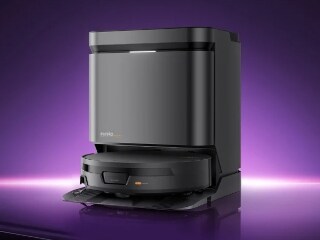- Home
- Laptops
- Laptops News
- New holographic memory device could improve storage capacity and processing
New holographic memory device could improve storage capacity and processing

This memory device uses 'spin waves' - a collective oscillation of spins in magnetic materials - instead of optical beams.
Spin waves are advantageous because spin wave devices are compatible with the conventional electronic devices and may operate at a much shorter wavelength than optical devices, allowing for smaller electronic devices that have greater storage capacity.
"The results open a new field of research which may have tremendous impact on the development of new logic and memory devices," said Alexander Khitun, lead researcher at University of California, Riverside.
The study found it was feasible to apply holographic techniques developed in optics to magnetic structures to create a magnonic holographic memory device.
Holography is a technique-based on the wave nature of light which allows the use of wave interference between the object beam and the coherent background.
It is commonly associated with images being made from light, such as on driver's licenses or paper currency. However, this is only a narrow field of holography.
Khitun and his team conducted the experiments using a 2-bit magnonic holographic memory prototype device. A pair of magnets, which represent the memory elements, were aligned in different positions on the magnetic waveguides.
Spin waves propagating through the waveguides are affected by the magnetic field produced by the magnets. When spin waves interference was applied in the experiments, a clear picture was produced and the researchers could recognise the magnetic states of the magnets. The findings of the study are published (advance copy) in the journal Applied Physics Letters.
There are three co-authors of the 'Magnonic Holographic Memory' paper: Frederick Gertz, a graduate student who works with Khitun at UC Riverside, and A. Kozhevnikov and Y. Filimonov, both of the Russian Academy of Sciences.
Catch the latest from the Consumer Electronics Show on Gadgets 360, at our CES 2026 hub.
Related Stories
- Samsung Galaxy Unpacked 2025
- ChatGPT
- Redmi Note 14 Pro+
- iPhone 16
- Apple Vision Pro
- Oneplus 12
- OnePlus Nord CE 3 Lite 5G
- iPhone 13
- Xiaomi 14 Pro
- Oppo Find N3
- Tecno Spark Go (2023)
- Realme V30
- Best Phones Under 25000
- Samsung Galaxy S24 Series
- Cryptocurrency
- iQoo 12
- Samsung Galaxy S24 Ultra
- Giottus
- Samsung Galaxy Z Flip 5
- Apple 'Scary Fast'
- Housefull 5
- GoPro Hero 12 Black Review
- Invincible Season 2
- JioGlass
- HD Ready TV
- Laptop Under 50000
- Smartwatch Under 10000
- Latest Mobile Phones
- Compare Phones
- Motorola Signature
- Vivo Y50e 5G
- Vivo Y50s 5G
- Realme 16 Pro+ 5G
- Realme 16 Pro 5G
- TCL Nxtpaper 70 Pro
- OPPO A6 Pro 5G
- Honor Power 2
- Zephyrus Duo 16 (2026)
- Asus ROG Zephyrus G16 (2026)
- Realme Pad 3
- OPPO Pad Air 5
- Xiaomi Watch 5
- Huawei Watch 10th Anniversary Edition
- Acerpure Nitro Z Series 100-inch QLED TV
- Samsung 43 Inch LED Ultra HD (4K) Smart TV (UA43UE81AFULXL)
- Asus ROG Ally
- Nintendo Switch Lite
- Haier 1.6 Ton 5 Star Inverter Split AC (HSU19G-MZAID5BN-INV)
- Haier 1.6 Ton 5 Star Inverter Split AC (HSU19G-MZAIM5BN-INV)
-
 Lenovo Legion Go 2 SteamOS Version Revealed at CES 2026, Will Be Available From June 2026
Lenovo Legion Go 2 SteamOS Version Revealed at CES 2026, Will Be Available From June 2026
-
 Motorola Unveils Unified AI Platform and AI Pin-Styled Wearable Device Prototype at CES 2026
Motorola Unveils Unified AI Platform and AI Pin-Styled Wearable Device Prototype at CES 2026
-
 iQOO Z11 Turbo Battery, Charging Details Confirmed; Tipster Leaks Camera Specifications
iQOO Z11 Turbo Battery, Charging Details Confirmed; Tipster Leaks Camera Specifications
-
 CES 2026: Eureka Z50, E10 Evo Plus Robot Vacuum Cleaners Launched, FloorShine 890 Tags Along
CES 2026: Eureka Z50, E10 Evo Plus Robot Vacuum Cleaners Launched, FloorShine 890 Tags Along












